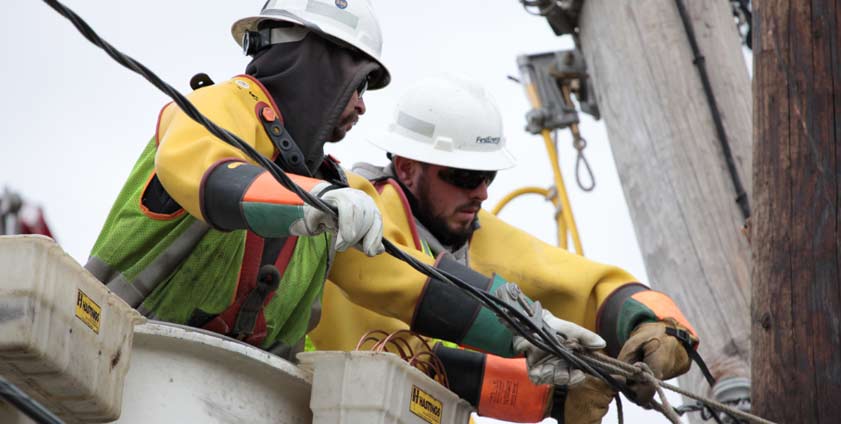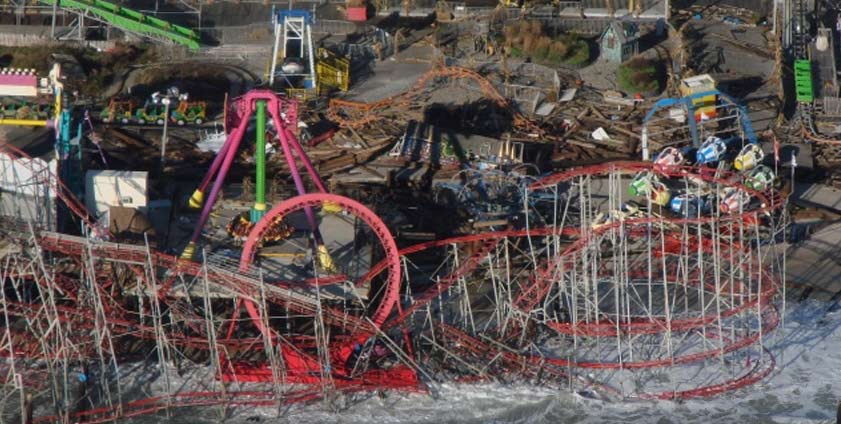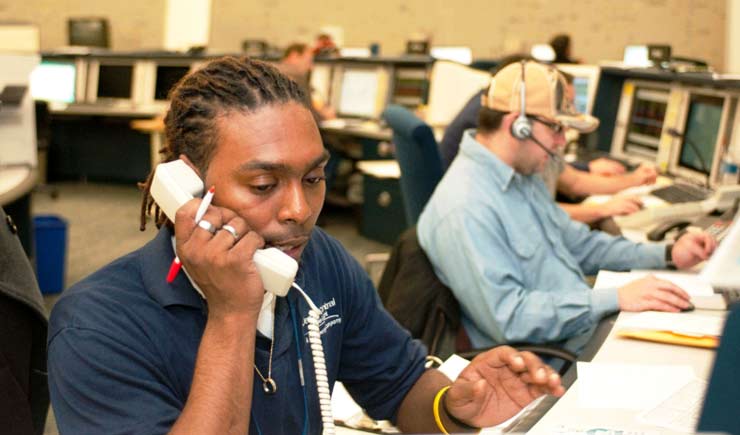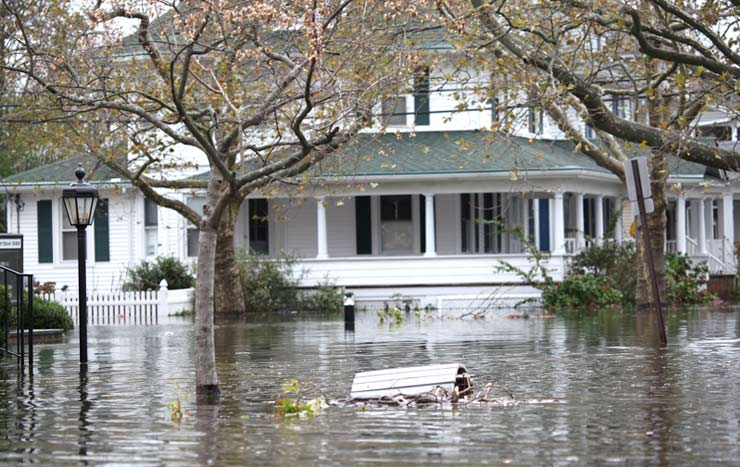Remembering Superstorm Sandy

Two FirstEnergy line workers make repairs to the electric system in Parsippany, N.J., following Superstorm Sandy.
October 26, 2022
When reflecting on Hurricane Sandy, one of the images that stands out for JCP&L’s Joe Hildebrandt was of the Casino Pier Ferris Wheel in Seaside Heights, N.J., being swallowed up by the Atlantic Ocean.
“It was something I will never forget,” recalled Joe, a 40-year veteran of the company who spent 20 years as a line worker before assuming his current role as manager, Operations, in Point Pleasant. When Sandy’s high winds and heavy rain arrived in October 2012, Joe was stationed in JCP&L’s Berkeley District – one of the hardest hit areas of our New Jersey service territory.
Sandy eventually knocked out power to 2.47 million FirstEnergy customers, including nearly 1.2 million customers in New Jersey. The massive storm’s destruction led to the largest restoration effort in our company’s history.

Many of the attractions at the Casino Pier Amusement Park in Seaside Heights, N.J. – including a Ferris wheel and the Jet Star Roller Coaster – were destroyed by Sandy’s strong winds and storm surge.
On the 10th anniversary of Sandy, Joe remains proud of how our employees handled the adversity of the situation. “We asked an awful lot of employees after the storm, and they came through in a big way,” he said. “Many of our employees had no power at their own homes, yet they left their families and worked 16 hours per day for more than a month restoring service to customers.”
Michelle Santarseri has similar recollections of working after Sandy. She currently serves as manager, Operations in the Lakewood-Squankum area, but she was a relay technician in the Substations group at the time.
“Our team faced the daunting task of getting substations that had been submerged in flood waters ready to operate again,” said Michelle, who has 21 years of service with the company. “After the water receded, we removed leftover debris and began the cleaning and testing process to see what equipment was salvageable. The saltwater caused a lot of damage, so we had to test the relays, breakers and other devices to see if they could still function or if they had to be replaced.”

In the aftermath of Sandy, Lesanu Bailey, clerk senior (foreground), and Jasenko Dropic, senior Regional Distribution System operator, dispatched crews and directed the switching of lines from the Morristown, N.J., Regional Dispatch Office. Their efforts helped to ensure that line crews and other field personnel could complete their work safely.
| Sandy’s Impact by the Numbers
Here are some facts and figures related to our restoration efforts in the wake of Hurricane Sandy:
|
Lessons Learned
Implementing the Incident Command System (ICS) is one of the the biggest changes FirstEnergy made to its operating procedures following Superstorm Sandy. ICS uses a scalable and established hierarchy and common language to support effective communication and interaction between multiple agencies. According to John Huber, director, Emergency Preparedness, it has revolutionized the way we manage restoration events.
“Following our restoration efforts for Hurricane Irene in 2011 and Sandy in 2012, it was clear that we needed to enhance our response to natural disasters that matched the size and scope of these storms,” said John, who joined the company in 2008 as general manager, Line Operations, at Ohio Edison, before accepting his current role in 2014. “The ICS is a more disciplined and systematic approach to disasters that helps to make our operations safer and more efficient – both internally and through our interactions with other emergency responders.”
In addition to implementing the ICS, Michelle mentioned specific steps we have taken to fortify substations located in low-lying areas so they can weather these types of massive storms. “We have instituted mitigation procedures at substations that are in flood-prone areas, including the installation of barrier walls and pump systems,” she added. “We also have installed camera systems that can monitor water levels and send an alarm if the water rises to a certain level.”

A home near Asbury Park, N.J., was overpowered by Sandy’s torrential rain and storm surge.
Employee Resilience
Terry Malone, a 38-year veteran of the company, emphasized that even though Superstorm Sandy caused a lot of heartache and destruction, there are some positives that can be pulled from the experience.
“Overcoming the challenges posed by Sandy showcases the resilience and strength of our dedicated employees,” said Terry, Diversity & Inclusion consultant, Transmission. “Battling storms and restoring service to customers under difficult circumstances is what we do at FirstEnergy. It is who we are as a company, and our employees should take great pride in the service that they provide to the community.”